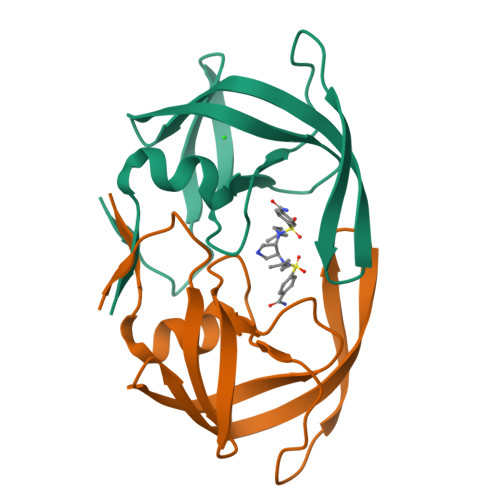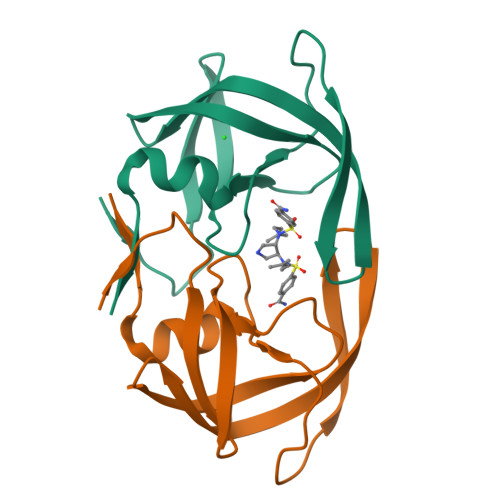Two Solutions for the Same Problem: Multiple Binding Modes of Pyrrolidine-Based HIV-1 Protease Inhibitors
Blum, A., Bottcher, J., Dorr, S., Heine, A., Klebe, G., Diederich, W.E.(2011) J Mol Biology 410: 745-755
- PubMed: 21762812
- DOI: https://doi.org/10.1016/j.jmb.2011.04.052
- Primary Citation of Related Structures:
2ZGA, 3CKT - PubMed Abstract:
Structure-based drug design is an integral part of industrial and academic drug discovery projects. Initial lead structures are, in general, optimized in terms of affinity using iterative cycles comprising synthesis, biological evaluation, computational methods, and structural analysis. X-ray crystallography commonly suggests the existence of a single well-defined state, termed binding mode, which is generally assumed to be consistent in a series of similar ligands and therefore used for the following optimization process. During the further development of symmetrically disubstituted 3,4-amino-pyrrolidines as human immunodeficiency virus type 1 protease inhibitors, we discovered that, by modification of the P1/P1' moieties of our lead structure, the activity of the inhibitors towards the active-site mutation Ile84Val was altered, however, not being explainable with the initial underlying structure-activity relationship. The cocrystallization of the most potent derivative in complex with the human immunodeficiency virus type 1 protease surprisingly led to two different crystal forms (P2(1)2(1)2(1) and P6(1)22). Structural analysis revealed two completely different binding modes; the interaction of the pyrrolidine nitrogen atom with the catalytic aspartates remains as the only similarity. The study presented clearly demonstrates that structural biology has to escort the entire lead optimization process not to fail by an initially observed binding orientation.
Organizational Affiliation:
Institut für Pharmazeutische Chemie, Philipps-Universität Marburg, Marburg, Germany.




















